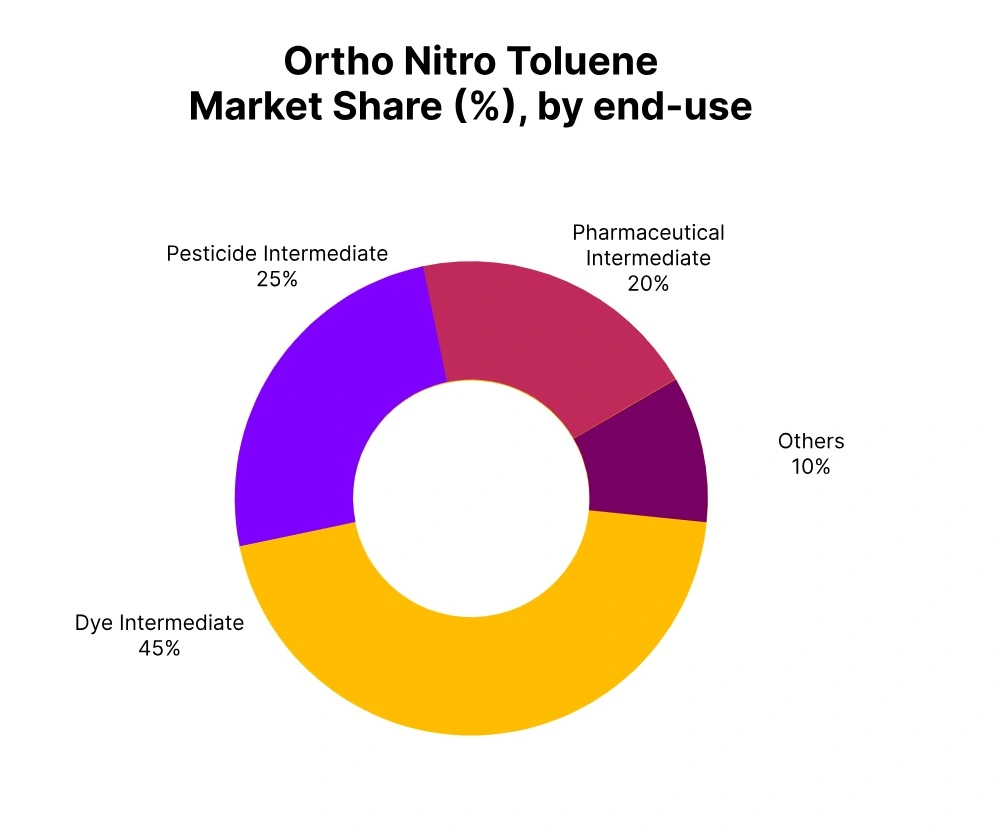Price-Watch’s most active coverage of Ortho Nitro Toluene price assessment:
- Industrial Grade (99%) FOB Nhava Sheva, India
- Industrial Grade (99%) CIF Hamburg (India), Germany
- Industrial Grade (99%) CIF Busan (India), South Korea
- Industrial Grade (99%) CIF Niigata (India), Japan
Ortho Nitro Toluene (ONT) Price Trend Q3 2025
In Q3 2025, the global Ortho Nitro Toluene (ONT) market showed uneven performance across regions. Western markets such as Germany showed moderate price declines due to weak demand from agrochemical and pharmaceutical intermediates sectors amid cautious procurement and soft industrial activity. European regions were comparatively stable with slight downward pressure, as higher freight costs were offset by subdued consumption.
Nevertheless, Asia-Pacific markets experienced notable weakness with prices falling in South Korea and Japan on account of elevated logistics expenses and reduced demand from dye and pigment manufacturers, despite reliable supply from Indian exporters.
In general, the market remained reasonably balanced underpinned by stable industrial activity, stable feedstock supply, and moderate freight conditions. Regional supply chain fundamentals and disparate downstream consumption trends continued to drive pricing during the quarter.
India
Ortho Nitro Toluene (ONT) Export Price from India, Industrial Grade (99%) FOB Nhava Sheva.
In Q3 2025, Ortho Nitro Toluene (ONT) price in India has declined slightly, reflecting balanced supply and moderate global demand from downstream agrochemical and dye intermediate sectors. FOB Nhava Sheva prices ranged between USD 1,360–1,410 per metric ton, marking a quarterly decrease of 2.00%. In September 2025, Ortho Nitro Toluene (ONT) prices in India have eased by 0.57% from the previous month, indicating continued softening amid stable domestic production.
According to PriceWatch, the Ortho Nitro Toluene price trend in India has been influenced by consistent output from Gujarat-based chemical clusters, slightly softened feedstock Toluene and Nitric Acid costs, and competitive pricing strategies by suppliers securing long-term contracts in Europe and Asia. Market sentiment has remained neutral, supported by steady offtake, while overall price resilience continues to depend on global demand recovery.
Germany
Ortho Nitro Toluene (ONT) Import Price in Germany from India, Industrial Grade (99%) CIF Hamburg (India).
During Q3 2025, Ortho Nitro Toluene (ONT) price in Germany has declined moderately, reflecting weak demand from agrochemical and pharmaceutical intermediates sectors. CIF Hamburg prices ranged between USD 1,400–1,600 per metric ton, marking a quarterly decrease of 2.67%. Freight costs to Hamburg rose moderately due to sustained demand for Indian specialty chemical exports, adding upward pressure to overall expenses.
In September 2025, Ortho Nitro Toluene (ONT) prices in Germany have increased by 0.67% from the previous month, signalling minor recovery amid steady supply from Indian exporters. The Ortho Nitro Toluene price trend in Germany has been shaped by consistent quality and reliable supply from India, selective procurement by German buyers, and soft industrial activity. Overall, market conditions have remained balanced, with moderate price pressure persisting.
South Korea
ONT Import Price in South Korea from India, Industrial Grade (99%) CIF Busan (India).
During Q3 2025, Ortho Nitro Toluene (ONT) price in South Korea has shown notable weakness, reflecting subdued demand from downstream dye and pigment manufacturers. CIF Busan prices ranged between USD 1,420–1,550 per metric ton, reflecting a quarterly decline of 3.03%. Freight costs to Busan rose significantly due to strong demand for Indian chemical shipments and Northeast Asian port bottlenecks, increasing overall expenses.
According to PriceWatch, in September 2025, Ortho Nitro Toluene (ONT) prices in South Korea have risen by 0.34% from the previous month, indicating slight stabilization amid elevated logistics costs. The ONT price trend in South Korea has been influenced by cautious operating rates among converters, competitive pricing by Indian suppliers, and cost-conscious procurement. Overall, market sentiment has remained soft, with limited upside expected without a rebound in domestic consumption.
Japan
Ortho Nitro Toluene (ONT) Import Price in Japan from India, Industrial Grade (99%) CIF Niigata (India).
During Q3 2025, Ortho Nitro Toluene (ONT) price in Japan has declined slightly, reflecting stable but cautious demand from downstream agrochemical and fine chemical sectors. CIF Niigata prices ranged between USD 1,400–1,520 per metric ton, marking a quarterly decrease of 2.73%. Freight costs increased moderately, supported by sustained demand for Indian specialty chemical imports and stable shipping schedules, adding to overall expenses.
According to PriceWatch, in September 2025, Ortho Nitro Toluene (ONT) prices in Japan have risen by 0.42% from the previous month, suggesting tentative buying interest amid lean inventory management. The ONT price trend in Japan has been shaped by competitive pricing and consistent quality from Indian suppliers, steady offtake, and buyers favoring long-term contracts to ensure supply continuity. Overall, market sentiment has remained balanced, with limited near-term price recovery expected.



